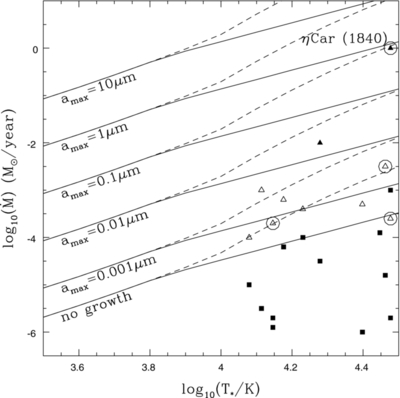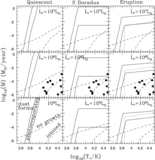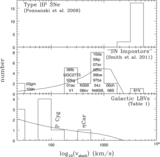Image Details

Caption: Figure 2.
Mass-loss rates needed to grow dust particles to radius a max (Equation (21)). In computing the ratio of Planck factors Q rat, we have either assumed the existence of a cooler photosphere T phot = min( T *, 7000 K) (solid) or used T phot = T * (dashed). The triangles show the estimated mass-loss rates during (great) eruptions based on either the observed duration (filled triangles, η Car and P Cyg) or durations estimated from the shell widths (open triangles). We argue in the text that these latter estimates are gross underestimates of the mass-loss rates in eruption. The filled squares show the present-day properties of the systems in Table 1. Objects in Table 1 noted as having exceptionally large grain sizes are circled. The temperatures are left fixed at the present-day temperature estimates—in reality they were cooler during the eruption but we lack direct measurements.
Copyright and Terms & Conditions
© 2011. The American Astronomical Society. All rights reserved.





